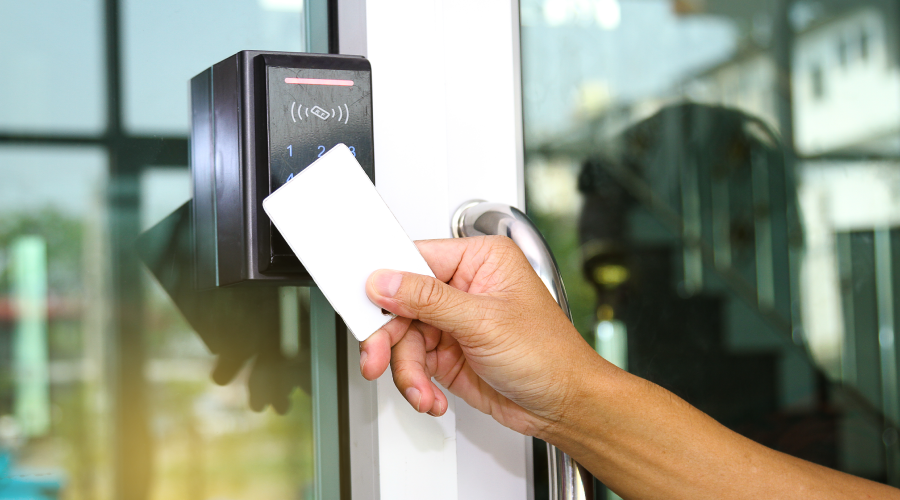Maintaining Locks, Hinges, Closers and Exit Devices
Aside from roofs, door hardware generally requires the most maintenance time of any facility component. The reason for this level of attention is doors cycle open and closed many times in a year, especially in locations such as visitor and employee entrances, loading docks, and doors to outside storage areas for frequently used items.
Managers have two major goals in developing a strategy for door-hardware maintenance: Provide smooth, safe access into and out of the facility, and minimize the commitment of technician time and resources to the inspection and repair of doors and door hardware. They can achieve these goals by developing a thorough preventive maintenance program and ensuring technicians use the most efficient tools and procedures.
Focus on Components
Institutional and commercial facilities feature a range of door-hardware components, but the key components include locks, hinges, closers and exit devices.
Mortise locks have both a latch bolt and a dead bolt in a rectangular housing, requiring a similar shaped opening mortised into the edge of the door for installation. Technicians need to install mortise locks from the edge of the door and can remove them only from that direction for repair or replacement. These locks are very secure and require little maintenance, so managers tend to specify them in exterior or entry doors, where security is important.
Bored locks are installed through a hole sawed in the face of the door. A smaller hole in the edge of the door accommodates the latch bolt. Using a template that comes with the instructions for lock assembly can simplify the process of locating a hole. Managers most commonly specify bored locks in doors on interior offices, rooms or closet doors.
Electromechanical versions of mortise and bored locks are available for applications in which it is necessary to close or open all locks from a central point. A user can open this type of lock with a key or operate it electronically from a remote location, such as a security guard’s station in case of an emergency.
Closers automatically return a door to a closed and latched position after a user opens it manually. They are two-speed hydraulic or pneumatic devices that use rapid-closing action to slow the door about 5-6 inches from the closed position as the door approaches the stop.
Closers require very little maintenance if technicians check their action periodically. A technician should check the closing action at least twice a year, and more often if traffic is heavy, to ensure the door closes all the way but does not strike the stop too hard. The technician can adjust the action by turning an adjusting screw on the body of the closer in or out to make the action slower or faster, with the goal of minimizing the closing impact.
Exit devices are bar-type attachments connected to the interior of the door and the latch that open the door when a user applies pressure to the latch. This action allows hands-free operation of the door.
Managers often specify this type of hardware for doors in emergency exits, heavy-traffic areas, and public gathering places. The latch might be in the doorjamb or linked by a vertical bar to the top of the frame.
Related Topics:















